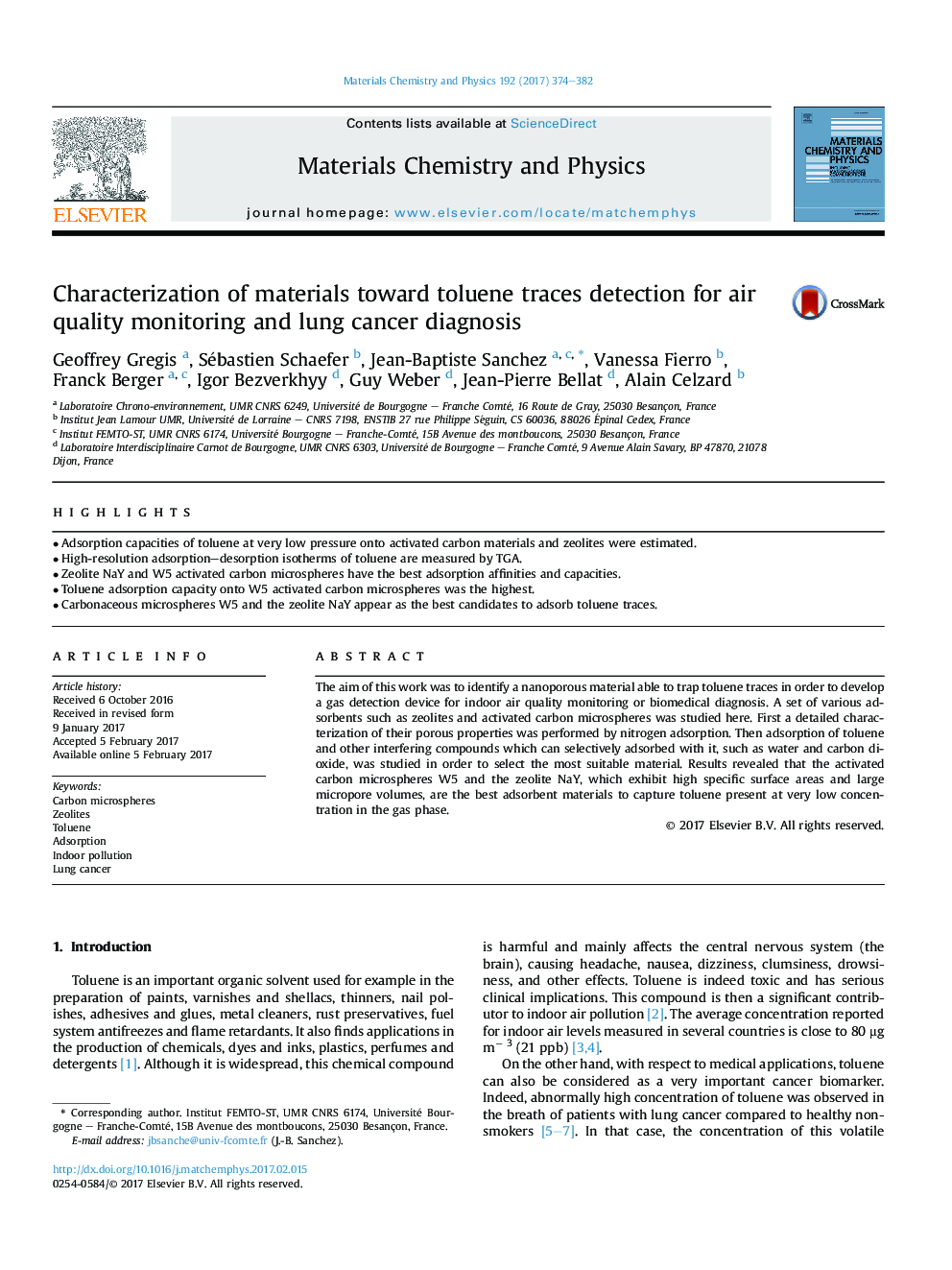| Article ID | Journal | Published Year | Pages | File Type |
|---|---|---|---|---|
| 5448248 | Materials Chemistry and Physics | 2017 | 9 Pages |
Abstract
The aim of this work was to identify a nanoporous material able to trap toluene traces in order to develop a gas detection device for indoor air quality monitoring or biomedical diagnosis. A set of various adsorbents such as zeolites and activated carbon microspheres was studied here. First a detailed characterization of their porous properties was performed by nitrogen adsorption. Then adsorption of toluene and other interfering compounds which can selectively adsorbed with it, such as water and carbon dioxide, was studied in order to select the most suitable material. Results revealed that the activated carbon microspheres W5 and the zeolite NaY, which exhibit high specific surface areas and large micropore volumes, are the best adsorbent materials to capture toluene present at very low concentration in the gas phase.
Related Topics
Physical Sciences and Engineering
Materials Science
Electronic, Optical and Magnetic Materials
Authors
Geoffrey Gregis, Sébastien Schaefer, Jean-Baptiste Sanchez, Vanessa Fierro, Franck Berger, Igor Bezverkhyy, Guy Weber, Jean-Pierre Bellat, Alain Celzard,
